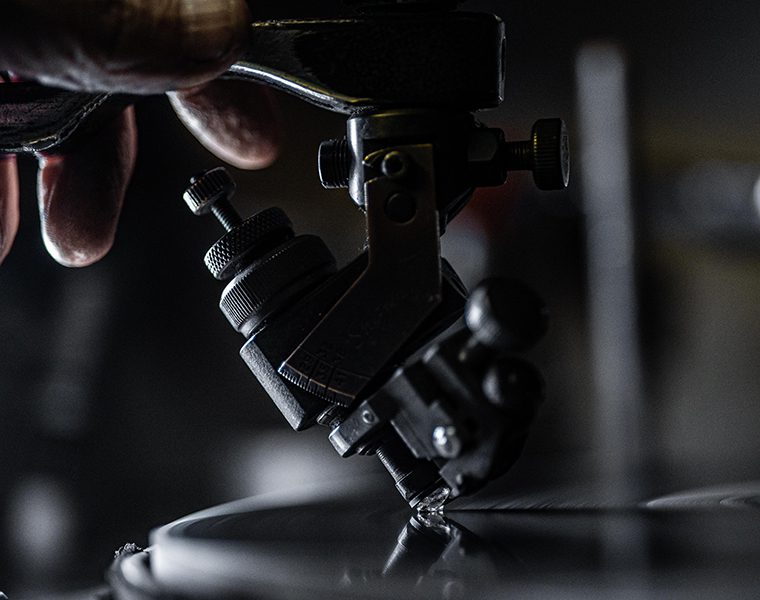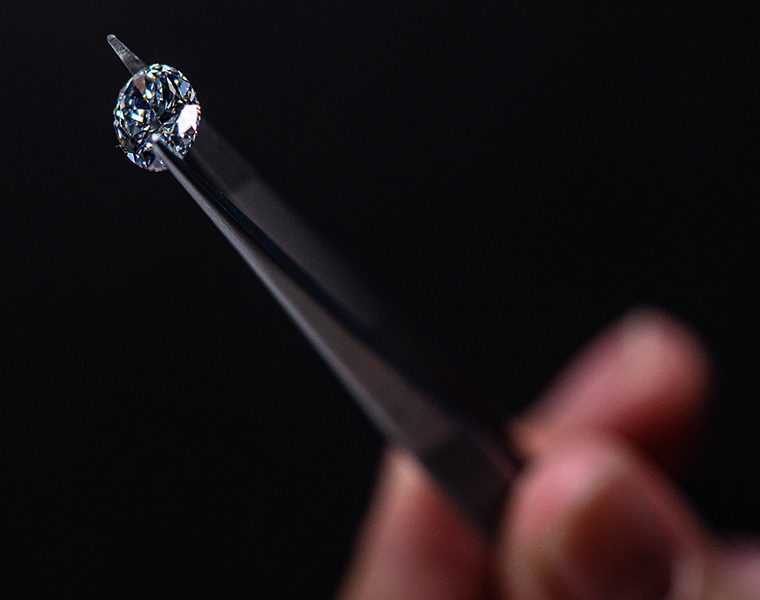What To Know About Lab Grown Diamonds (Everything You Need To Know)

By now, you’ve probably heard the phrase “lab-grown diamond” a few times, if not more. Maybe the bride-to-be in your friend circle can’t stop gushing about how much she adores her new engagement ring and mentioned that its center stone is a lab-grown diamond rather than a natural diamond. On the other hand, perhaps during your own engagement ring search, you’ve been greeted by ads or salespeople trying to convince you it’s “better” to purchase a natural, earth-mined diamond instead of a lab-grown diamond — or vice versa.
Over the last ten years, lab-grown diamonds have been a hot topic in the diamond jewelry world. Yet, even if you are familiar with these stones, you may be unsure of whether a lab-grown diamond is a fit for you — possibly because so many rumors and competing beliefs about lab-grown diamonds often overshadow the facts. If you’ve ever considered wearing lab-grown diamonds, you’ve probably had questions, too: Are they actual, real diamonds? Will other people notice my ring has a lab-grown diamond? Why are these diamonds less expensive? And what the heck does “lab-grown” even mean.
Admittedly, uncovering the facts about what to know about lab-grown diamonds can be confusing, with a lot of differing opinions. We don’t believe diamonds should be confusing so we’ve compiled an overview of everything you need to know about lab-grown diamonds, whether you’re thinking about purchasing an engagement ring soon or just want to know what all the fuss is about.

Shop Jean Dousset lab grown diamond engagement rings.
What to know about lab-grown diamonds — are they real diamonds?
When it comes to lab-grown diamonds, first thing’s first: Yes, lab-grown diamonds are 100-percent real diamonds; they are not fake or simulant diamonds, nor are they moissanite or cubic zirconia. Lab-grown diamonds may also be referred to as lab-created diamonds or man-made diamonds (the terms are interchangeable) — but, no matter what they’re labeled, they are as “real” as diamonds that are mined from the earth. It's a fact that lab-grown diamonds are made of the exact same physical, optical, and chemical properties as earth created diamonds. The sparkle is the same, the only difference is the origin of the diamond; natural diamonds grow in the earth, while lab-created diamonds are grown in a lab that mimics the growing conditions of the earth.
So, then, what does “lab-grown” or “lab-created” mean?
That’s a great question. In short, you should know a lab-grown diamond is simply a diamond created in a special laboratory rather than naturally occurring in the earth’s crust, where earth-made diamonds are formed, found, and eventually mined. However, the process of growing man-made diamonds is incredibly precise — and this precision ensures that lab-grown diamonds have the same sparkle, scintillation, and appeal as natural diamonds.
Because lab-created diamonds are meticulously created in controlled laboratory environments using advanced technologies, the growth process they undergo is akin to that of natural diamonds. We break down everything you need to know below about how a lab diamond is grown, or created.
Learn more about Jean Dousset lab diamond quality and our process.
How is a lab-grown diamond actually created, or grown in a lab?
Scientifically, both natural and lab diamonds are formed from carbon atoms exposed to extremely high temperature levels. Although there are multiple processes that can be utilized to create a lab-grown diamond, Jean Dousset lab diamonds designs exclusively feature lab-created diamonds that were grown using a technique called CVD, which stands for Chemical Vapor Deposition. We break down everything you need to know about this lab-grown growth process below:
There are two common methods for lab diamond creation and growth: High Pressure High Temperature (HPHT) and CVD (Chemical Vapor Deposition). CVD is a newer technology and the preferred process to produce a quality, genuine diamond. At Jean Dousset, all of our lab diamonds greater than 1 carat are grown using the CVD process.
Growing these diamonds requires an innovative process that starts with a thin ‘seed’ diamond placed inside a chamber and is then subjected to high temperatures. Then, a carbon-rich gas mixture is introduced to the chamber. The gases are ionized to break down their molecular bonds, allowing the pure carbon to attach itself to the diamond seed. As the carbon builds up, it forms atomic bonds with the seed diamond, resulting in the growth of a new, larger diamond — identical to diamonds found in nature. And, as with the creation of all beautiful things, growing a lab diamond takes time: generally, a 1 carat CVD diamond requires about a month of growing time.
Learn more about Jean Dousset's quality of lab diamonds.
Do lab-grown diamonds look different from natural diamonds?
Everything you need to know about lab diamonds begins with the fact that they are chemically and optically the same as natural diamonds. Since the primary difference between a lab-grown diamond and an earth-mined diamond is its growth origin, lab-grown diamonds do not look any different than earth-mined diamonds. Even an expert gemologist cannot recognize the difference between the two with the naked eye, and lab diamonds will test positive on a diamond tester, as they should.
Just like naturally grown diamonds, not all lab diamonds are created or cut perfectly and still require a selection process to identify the most optimal, beautiful, and high quality cut stones. Jean and our team of experts identify the most optimal stones grown, which are then used in Jean Dousset engagement rings and jewelry.
Explore the quality of Jean Dousset, a lab diamond engagement ring & jewelry collection.
“There are really poor looking natural diamonds, so, naturally, there are really poor looking lab-grown diamonds, too,” Jean notes. “But our value system at Jean Dousset is always to select the best cut diamond — so we’re applying this philosophy to our lab-grown diamond selection. So, no matter what you prefer, you’ll have the same visual and emotional experience.”
Jean says that just as he selects the top one percent of natural diamonds, he also selects the upper echelon of lab-created diamonds. Lab-created diamonds used at Jean Dousset are all certified by GIA, the foremost diamond grading authority in the world. The quality of Jean Dousset lab diamonds is exceptional. All Jean Dousset center stones are within the D-H color range, as well as being considered Type IIa. Type IIa in natural diamonds is defined by the GIA as “the most chemically pure type of diamond, and often has exceptional optical transparency. Type IIa diamonds were first identified as originating from India (particularly from the Golconda region) but have since been recovered in all major diamond producing regions of the world."
What are the benefits of choosing a lab-grown diamond?
At Jean Dousset, we believe that both natural and lab-grown diamonds are magnificent options for your dream engagement ring. Still, there are a few unique benefits you should know that come along with embracing a lab-grown diamond — and how important these perks are to you depends on your one-of-a-kind situation.

Explore Jean Dousset, a luxury lab diamond engagement ring & jewelry collection.
When thinking about everything you need to know about lab-grown diamonds and engagement rings in general, price is often a major factor. Lab-grown diamonds are a fraction of the price of natural diamonds. In this sense, lab diamonds allow more people to embrace the care, quality, and craftsmanship of a piece of luxury diamond jewelry. “A lab diamond offers the same visual experience with none of the compromises,” Dousset says. When talking about lab diamond engagement rings, Dousset says ‘I think it will allow people to splurge on well-crafted designer settings, whereas they couldn’t consider it before, since so much of their budget was consumed by the high cost of the diamond center stone.”
The decision to invest in a “respectably sized” natural diamond center stone often requires couples to compromise on the quality of the diamond or the ring’s craftsmanship. However, with lab-grown diamonds, “you get an opportunity to have a greater size, no compromise whatsoever on the quality, and stick to your budget,” Jean further notes. In terms of the quality of diamonds, Jean adds, “Lab-grown diamond jewelry is definitely going to be a substitute for the lower quality diamonds people were somehow obliged to consider, in order to be able to afford a natural diamond.”
Should I select a lab-grown diamond or a natural diamond?
We believe it’s important to know your options and be able to decide what makes the most sense for you. “Our goal is to empower our clients by encouraging them to look into all the different choices that are available today,” Jean says. “I think Jean Dousset [and lab-grown diamonds] can be for everyone, regardless of how much money someone has or is willing to spend. You could consider a lab-grown diamond for many reasons whether it’s environmental, spending less, or affording a bigger stone.” Dousset adds, “I think natural and lab diamonds fit a different consumer belief system. They are both excellent choices for different reasons” but he adds, ‘the two options are indistinguishable in terms of brilliance, beauty, and feel.” At the end of the day, a diamond is a diamond and what you decide is a personal choice that will not affect your experience at Jean Dousset.



